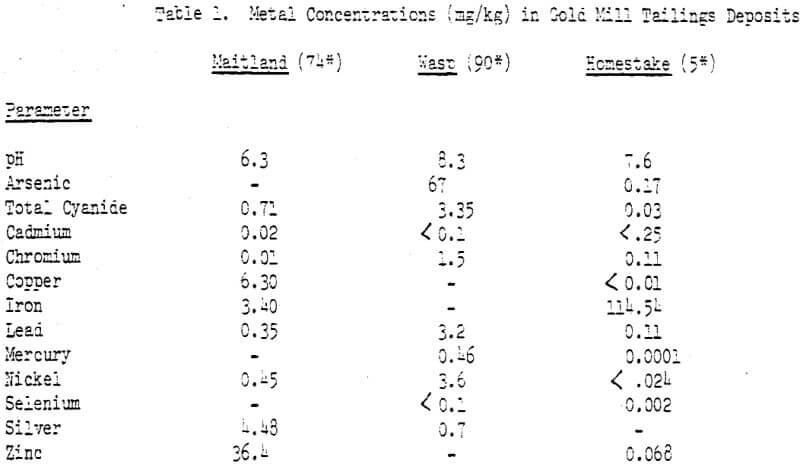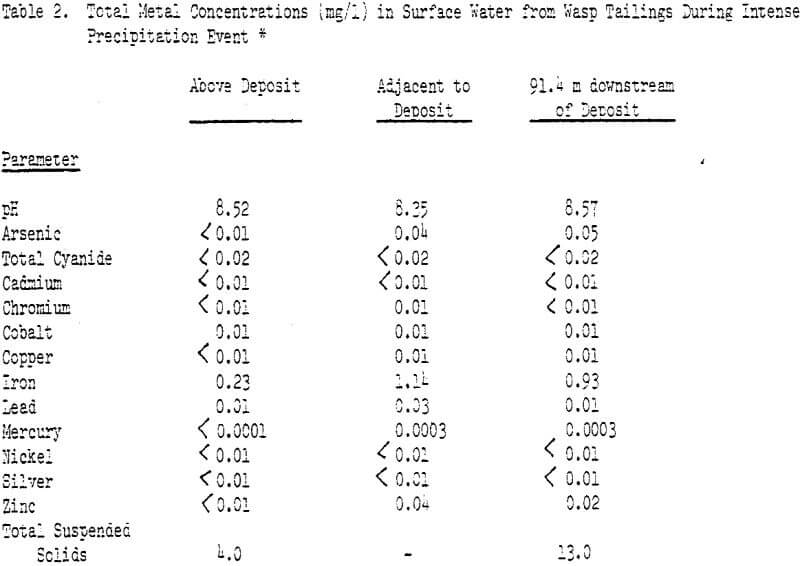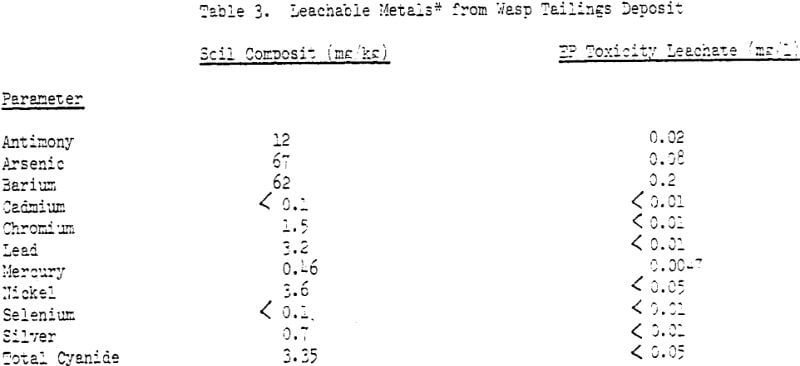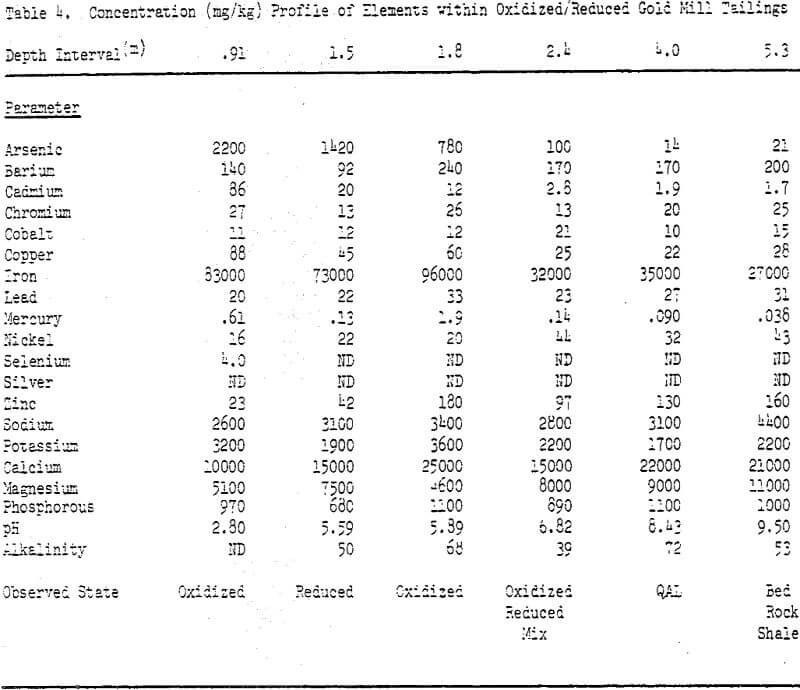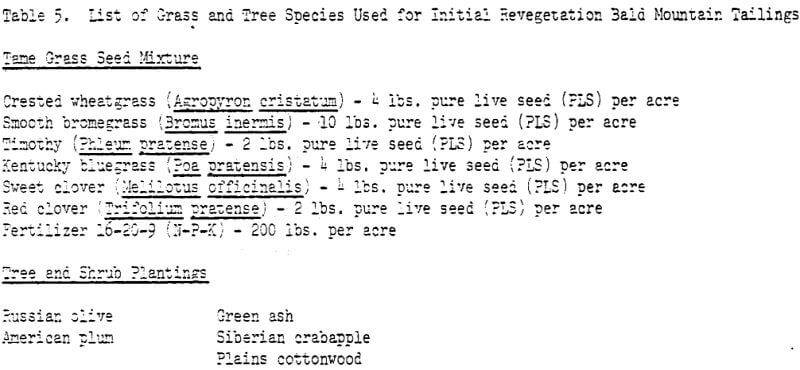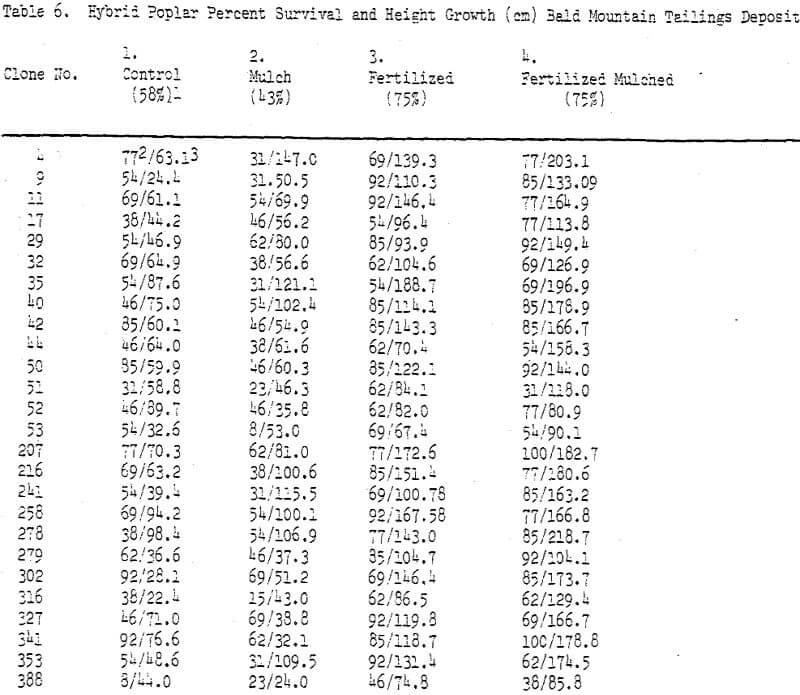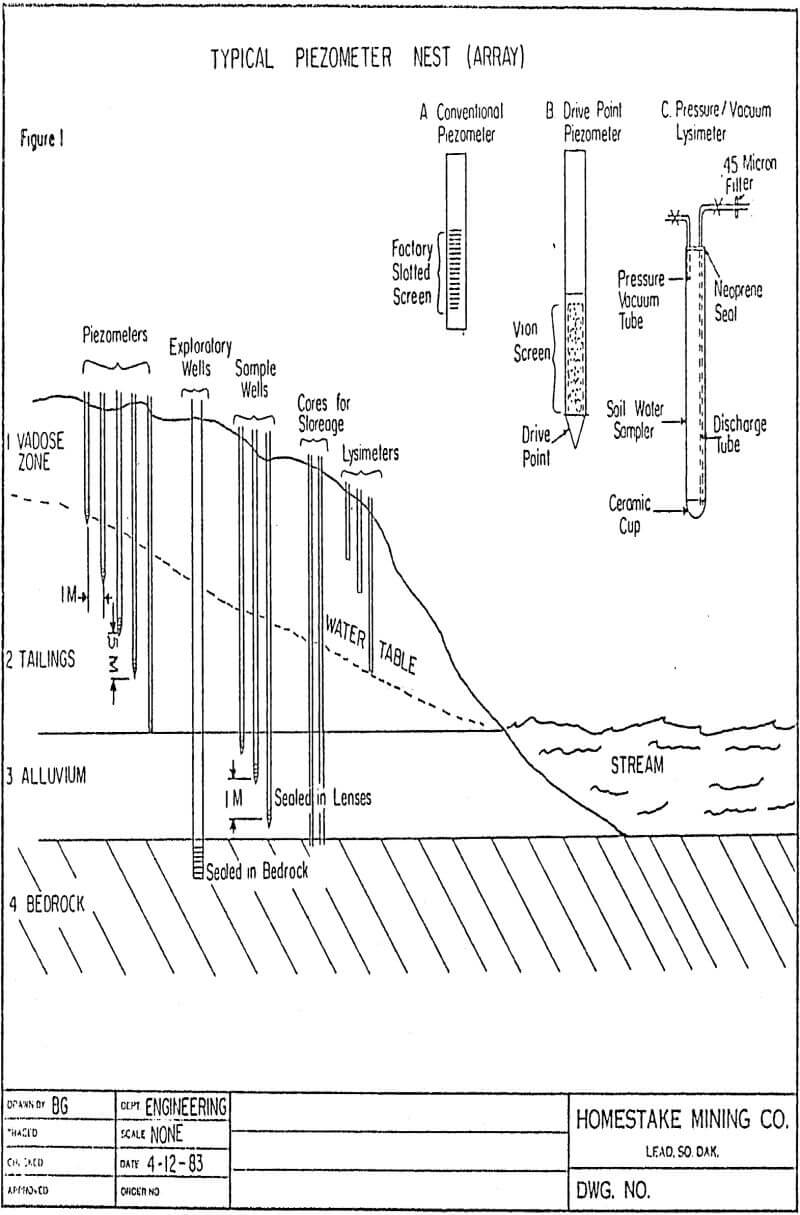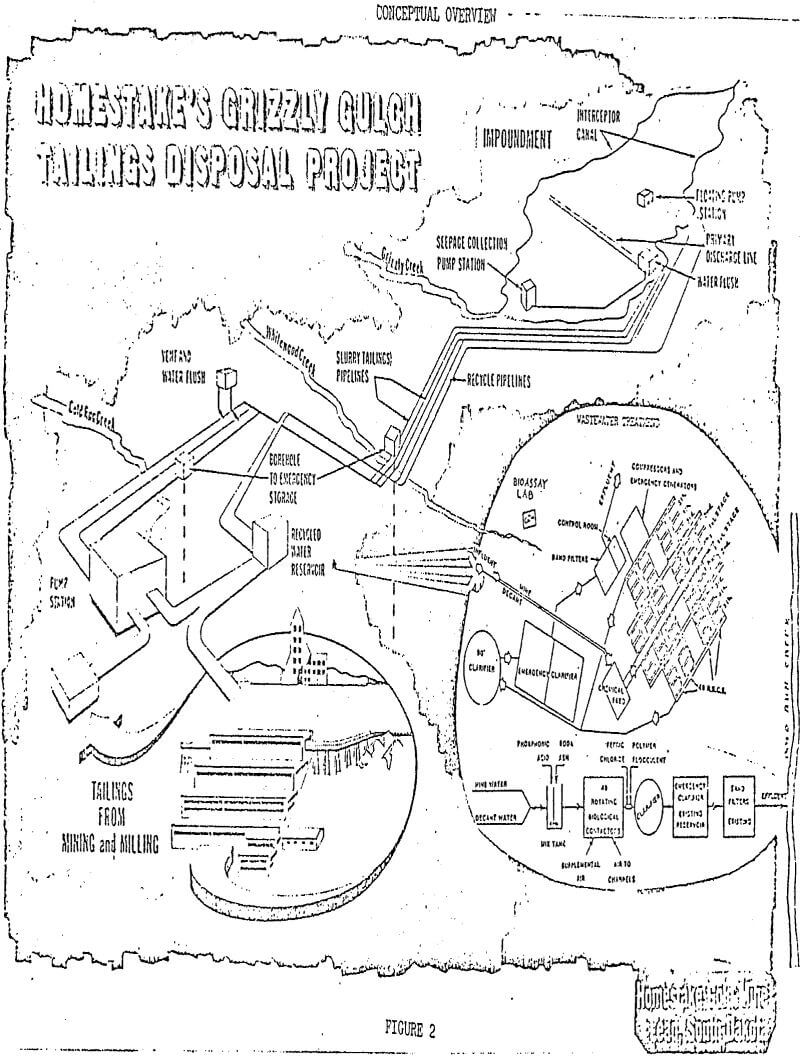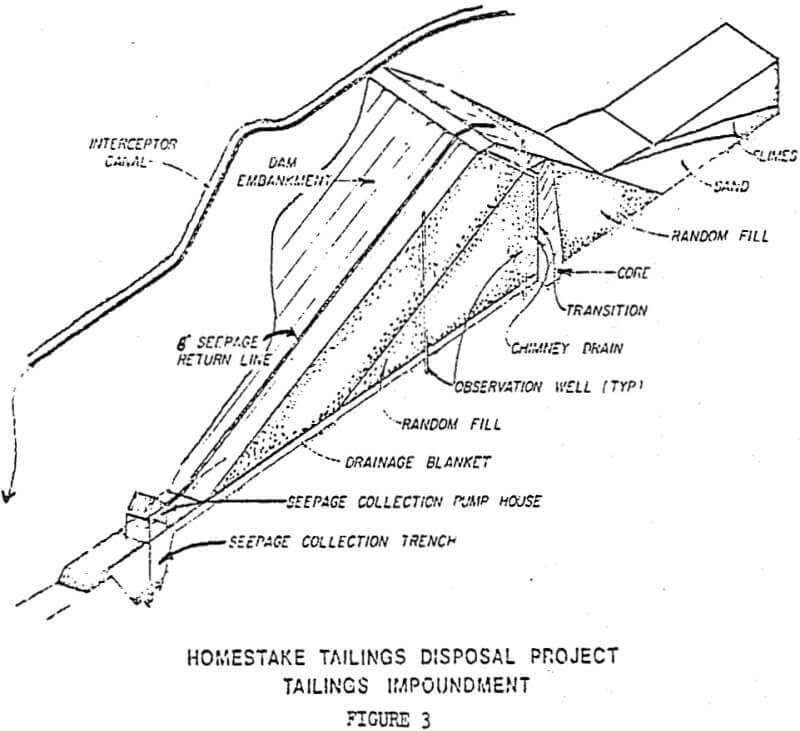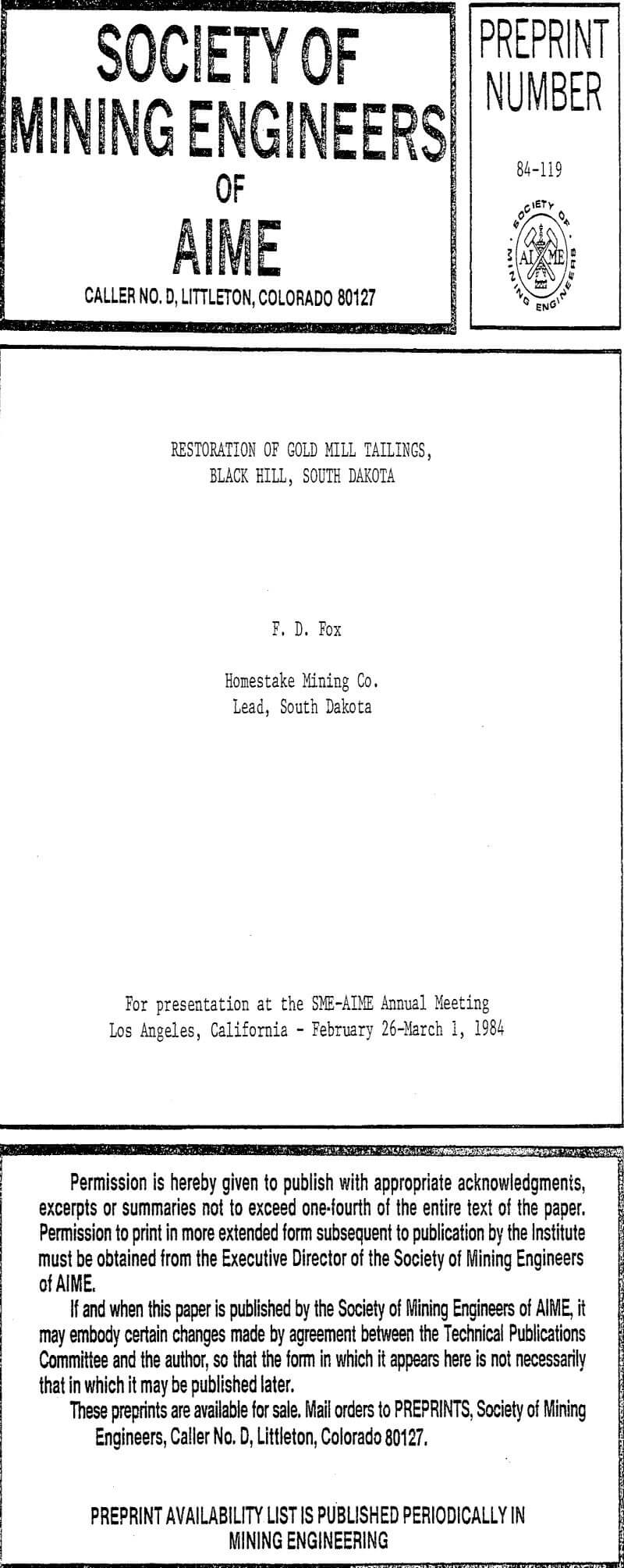Environmental Setting
A basic understanding of the climatic characteristics, geology, surface and groundwater hydrology conditions together with the physical and chemical characteristics of selected mill tailings deposits will aid in understanding the environmental problems associated with tailings disposal and restoration.
The Black Hills region is in the mid-latitudes which have a prevailing westernly airflow. The weather in this region is typical of a high elevation continental climate, characterized by extremes of summer heat (+100° F, +37.8 degrees Celsius) and winter cold (-30° F, -35.6 degrees Celsius) which are modified by the prominence of the mountainous uplifts. Winters are quite cold with near subfreezing temperatures normally occurring from December through March.
Physiographically, the Black Hills are located in a division of the Great Plains Province. The Black Hills are an elliptical uplift approximately 125 miles (201.2 km) long and 65 miles (104.6 km) wide. Rocks in the region range from Precambrian to Cretaceous. The metamorphic history and structure of the area are complex.
The Black Hills are within the Cheyenne River Basin, most of which is gently rolling plain. Watersheds in the Black Hills possess steep land slopes averaging 27 percent. These slopes are predominantly forested. Topographic conditions are characterized by high relief with an average elevation of about 6,000 feet.
The bulk composition of mill tailings is very similar to the mineralogy of the ore bodies mined. Tailings found in the majority of older deposits are usually stratified, with the older, coarser material located at the lower depths. Some shallow deposits have exhibited decreasing grain size with depth. This may be explained by settling of finer grained material into the deposit under the stimulus of rainfall and winnowing of fines near the surface. In most cases, both physical and chemical stratification are due to historical changes in ore processing and tailings deposition coupled with on-going hydrogeochemical processes that occur after deposition ceases.
Environmental Problems
Traditionally, the mining industry disposed of their waste tailings by utilizing the most convenient methods available. Mines and mills in the Black Hills were no exception to this rule. Past methods of disposal were either to impound the wastes in the upper most portions of watersheds or discharge them directly into nearby streams. These methods were considered appropriate and accepted by society. People go through life with a set of attitudes and beliefs appropriate to the era in which they live.
The beauty of the wilderness remains in much of the Hills, although there exist signs of man’s past encounters with the environment. Visual impacts on the surrounding landscape result from a variety of artifacts, including residential development, industrial complexes and mining and its related activities.
Downstream movement of tailings material and resultant leachate in the surface flow is closely related to topographic and surface water hydrologic characteristics. Variations in both bottom material chemistry and surface water chemistry are a result of this movement which occurs most often during intense precipitation events.
Early tailings disposal practices did little to account for potential contamination associated with leachate caused by downward movement of oxygenated water through tailings into the underlying groundwater regime. Although leach tests indicate little or no dissolution of heavy metals, oxidation of metallic sulfides, particularly pyrite and pyrrhotite, present potential and in some cases, actual contamination of the groundwater directly underlying the tailings deposit.
The sparsely vegetated, fine sandy textured tailings lack sufficient moisture and tend to dry out excessively. This condition, coupled with the topographic, climatic settings and general location of most deposits create favorable conditions for accelerated wind and water erosion. Deposits possess long gradual slopes and/or very steep inclines, both of which enhance the chances for sheet, rill or gully erosion. In addition, the abrasive actions of blowing sand particles are favored by winds gusting across a smooth, barren, dry surface with little or no vegetation.
Progress on Solving the Problems
Hot until recently were the above mentioned problems recognized by society (and the mining industry) to be of concern to the public health, welfare and environment. Very little was known of the potential environmental effects from past mining waste management and disposal practices.
Control of visual impacts resulting from more recent disposal practices is more certain. Modern engineering and design criteria for tailings disposal sites involves £ considerable degree of intuitive insite and creativity. Simplicity and convenience have given way to more detailed analysis of design and engineering principles which now include siting, layout, operation and final reclamation considerations, ail of which include aesthetics as a criterion to some degree.
As mentioned earlier, surface water quality and quantity are more influenced by sediment loading than the release of toxic materials during tailings transport. It has also been stated that both wind and water erosion of tailings material have created unfavorable conditions related to surface water quality. Therefore, implementation of a sound erosion and sediment control program for tailings disposal areas will minimize erosion which will in turn benefit the surface water quality.
Initial revegetation efforts dealt with seeding critical areas with a tame grass seed mixture recommended by the Soil Conservation Service (SCS) and fertilising with commercial 16-20-9 (N-P-K) , the purpose being to provide a quick, dense cover. In addition, five hundred (500) bare root stock trees and shrub seedlings obtained from the SCS were planted on the upper tailings deposit to provide long term protective cover. (Refer to Table 5 for list of species). No pretreatment of the tailings material took place prior to tree and shrub planting
The potential threat of contamination to groundwater from the movement of contaminants in solution is real when one considers the quantity and quality of abandoned tailings material in the Hills and the environmental conditions to which they are subjected. A total understanding of movement mechanisms within the tailings is essential in qualifying contamination to the underlying aquifers and is more importantly, essential in implementing measures to minimize or eliminate groundwater contamination.
Heap leaching low-grade mine waste rock with cyanide salts became of interest, as did the loading and hauling of an estimated fifty eight thousand (58,000) tons (52617t) of low-grade tailings (0.075 oz/ton, 2.3 g/t) from an old tailings deposit in Maitland, SD to the Homestake Mill in lead, SD; a distance of approximately five (5) miles (8 km).
Tailings Disposal Practices
In line with growing concern for the control of adverse impacts of solid wastes on the environment various federal, state and local regulations have been recently enacted. These regulations establish performance standards applicable to “treatment, storage, or disposal” of wastes to protect human health and the environment.
Conventional engineering and geotechnical principles that have been applied to tailings disposal management practices over the past two decades no longer serve as the only prerequisite to safe design criteria for the disposal of waste tailings.
The Homestake tailings disposal project was designed and engineered prior to the enactment of major legislation pertaining to the safe disposal of solid wastes. Nevertheless, it has had the opportunity to grow and develop with current regulations and technology extending beyond conventional mine waste treatment, storage and disposal practices.
